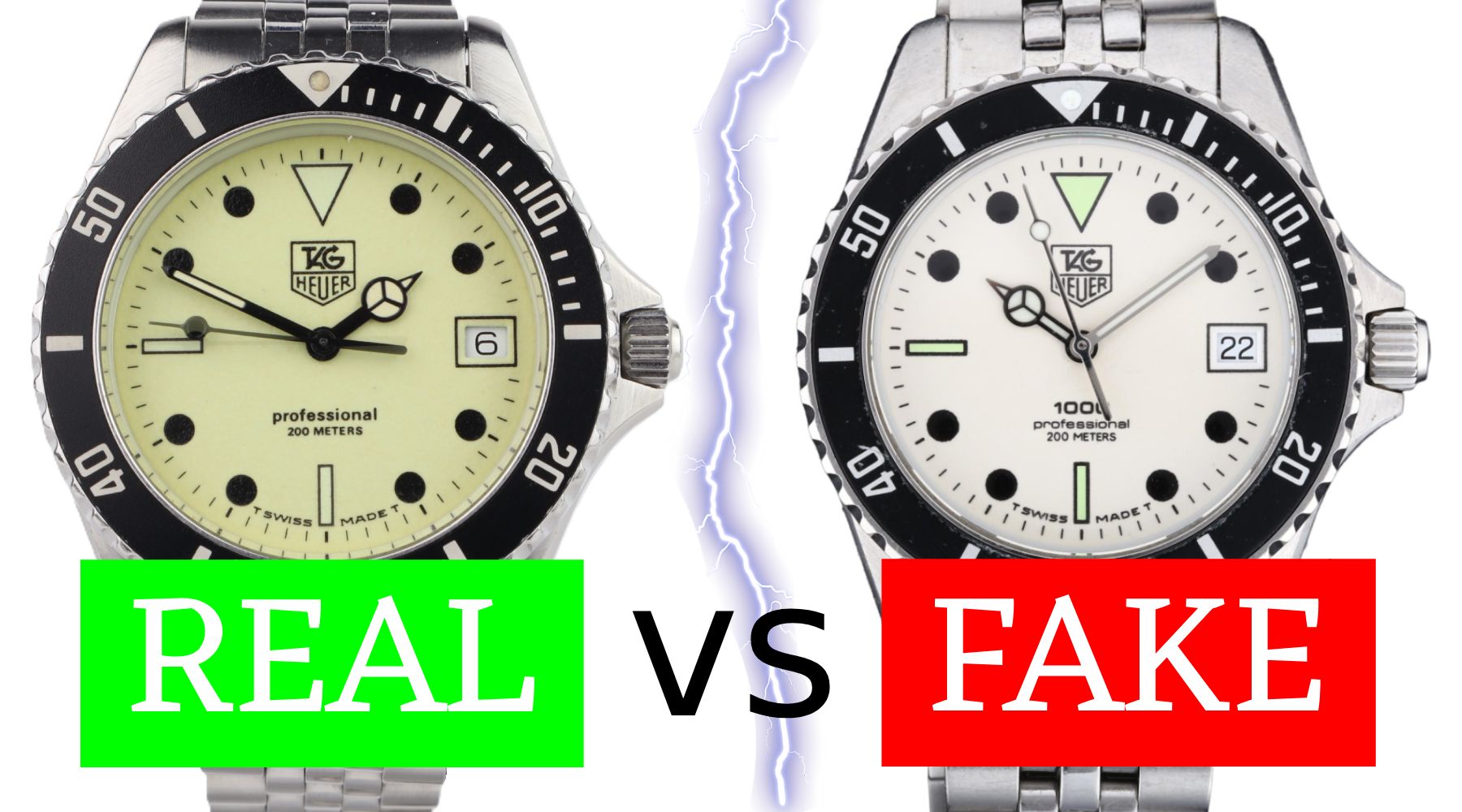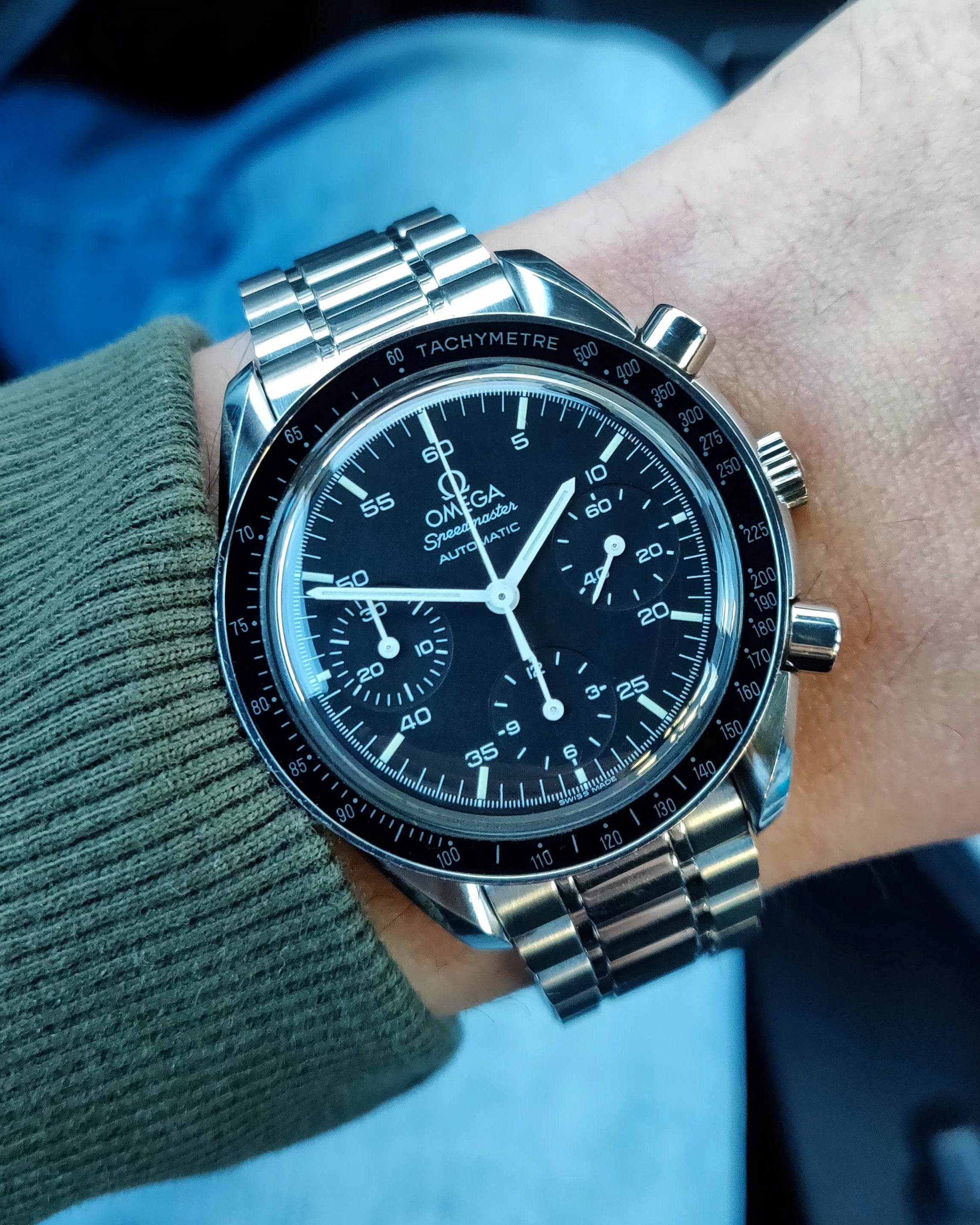You might be looking to buy a TAG Heuer 1000 Professional—or perhaps you already own one and want to confirm its authenticity. You admire the model for its design, reliability, historical importance or you’re a fan of Wolf of Wallstreet. B&O Watches specialises in vintage TAG Heuer divers, and the 1000 series is especially close to our hearts. It's one of the watches that launched our horological journey back in 2019. We carefully inspect and authenticate every watch we offer. With the tips we share here, you can learn how to spot a fake TAG Heuer 1000 too.
>> View our current selection of TAG Heuer 1000 watches for sale here <<
Are fake TAG Heuer 1000 watches a serious issue?
These days, fake TAG Heuer watches are unfortunately common—particularly models like the Aquaracer with its Calibre 5 movement. But back in the 1980s and ’90s, that wasn’t the case. Sadly, we regularly encounter fake 1000 series watches, many of which appear to have entered the market during the past decade (2010–2020).
Unknowing customers offer us counterfeit TAG Heuer 1000s to trade or sell. Followers on Instagram message us to proudly present their newly acquired TAG Heuer—often purchased from eBay or Catawiki—only for us to deliver the unfortunate news. Even reputable watch websites like WatchGecko have prominently featured fake TAG Heuer 1000s, such as in their 'Nightdiver' article.
To help inform the public, we've created this guide. By following the tips we share, you can avoid being fooled into buying a fake. Still unsure? We're happy to help—just send us a message!
For which TAG Heuer 1000 models can I use these tips?
This guide is meant for the most popular and widely produced midsize TAG Heuer models from the 1000 series, manufactured between 1985 and the mid-1990s. They feature a classic jubilee bracelet, a 38mm case (excluding the crown), and a dependable ETA quartz movement—a hallmark of TAG Heuer’s reliable design during this era.
- 980.013; steel with black bezel and dial
- 980.020; steel and gold plating; with black bezel and dial with golden accents
- 980.613; steel with blue bezel and dial
- 980.913; steel with red bezel and dial
- 980.113; steel with with full lume dial and black bezel

One notable model we’ll intentionally skip in this guide is the fully gold-plated TAG Heuer 984.013, also known as ‘Wolfie’. This iconic watch gained fame after appearing on Leonardo DiCaprio’s wrist in The Wolf of Wall Street. Due to its unique status and pop culture significance, we’ll dedicate a separate article to this 1000 series watch.
How to check the authenticity of a TAG Heuer 1000?
Caseback Engraving
There are a few simple ways to tell the difference between a real and fake TAG Heuer 1000. The caseback, particularly the engraving, is one of the most obvious tells. It's a feature consistent across all models, and therefore especially suitable if you've never had the opportunity to handle a TAG Heuer 1000 in person. A single photo of the caseback can often be enough to identify a fake.
One of the key details is how the TAG Heuer reference numbers (e.g., 980.xxx) are applied. On a genuine TAG Heuer 1000, the reference number is stamped into the metal, similar to the logo and other text on the caseback. These stamped numbers often appear slightly uneven—some digits may sit a bit higher or lower than others. Because the stamp is physically pressed into the case, light reflects unevenly across the surface, giving the engraving a distinctive texture.
In contrast, fake TAG Heuer 1000 watches feature laser-etched reference numbers. These look unusually perfect: precisely aligned, completely straight, and uniformly dark due to the metal being burned by the laser. The engraving lacks the depth and irregularity of a true stamp, and the style doesn’t match the rest of the caseback text.


Dial Colour
The dial colour is the second major indicator when comparing a real and fake TAG Heuer 1000 series watch. While it can't be detected on the black and two-tone models, it is shockingly obvious on others.
Take the fake TAG Heuer 980.613, for example. Instead of the rich sunburst blue dial seen on authentic models, the counterfeit version has a flat, blue-ish colour with unnatural purple undertones. Similarly, the fake 980.913 is supposed to feature a sunburst red dial, but instead appears closer to orange. In both cases, the bezel colour matches the fake colour.
Sadly, the worst fake is also the most frequently seen: the 980.113 with full lume dial—notably featured in WatchGecko’s article. On a genuine TAG Heuer 980.113, the dial features a creamy, yellowish textured lume. The fake version, by contrast, uses a flat, bright white lume that completely lacks the original’s vintage character.
Tritium versus Super-Luminova
The TAG Heuer 1000 series was produced until the mid-1990s, before Super-Luminova became the industry standard for luminescent materials. As a result, the 1000 series used its predecessor—tritium. Tritium has a distinct creamy, yellowish colour, whereas Super-Luminova typically emits a bright green glow. Over time, tritium degrades and loses its luminosity, which is a tell-tale sign of authenticity for vintage watches in general.
When comparing the lumed markers, hands, and bezel pip of a real and a fake TAG Heuer 1000, the difference is easy to spot. The fake pip at 12 o’clock and the hands appear almost stark white, while the markers have a bright green tint—a clear indicator that Super-Luminova was used instead of tritium.


Other counterfeit parts
While the caseback engraving, dial, and lume colour are the most obvious indicators, there are several other components that can help identify a counterfeit.
The bracelet, including the endlinks and clasp, is also aftermarket. The endlinks have an incorrect shape and are stamped with numbers—unlike genuine endlinks, which are unmarked. The counterfeit jubilee bracelet includes centre links seen on the Heuer 1000 series (pre-TAG). The curvature on the outer links is flatter compared to the rounded profile of authentic examples. On the TAG Heuer clasp, the logo is another giveaway—the font used on the fake is visibly thicker than on the original.
Inside, the movement of the fake watch is an unbranded ETA 955.112, whereas genuine TAG Heuer 1000 watches use an ETA 955.114. Authentic movements include a TAG Heuer-branded coil cover, stamped with the production year and quarter.

In Summary
Now you know how to authenticate a TAG Heuer 1000 Professional watch. Examine the caseback, dial colour, lume and if needed the bracelet and movement. Distinguish between stamped and laser-etched reference numbers, correct dial colours, and tritium versus Super-Luminova lume. The TAG Heuer 1000 series is yet another watch which proves the saying “buy the seller”. Our specialisation in vintage TAG Heuer watches ensures you can buy with complete confidence.
>> View all TAG Heuer watches currently available in our collection <<

